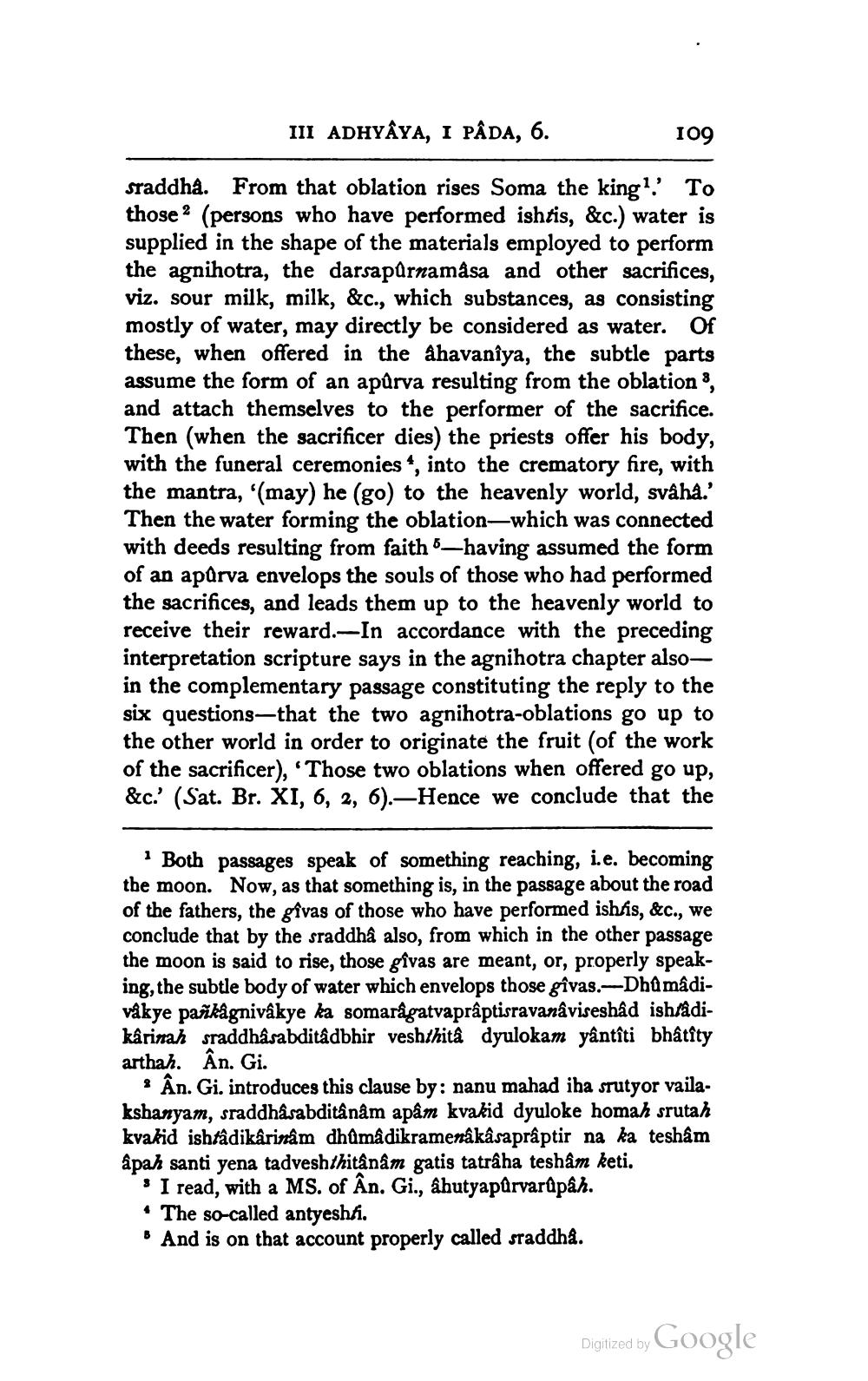________________
III ADHYÂYA, I PÂDA, 6.
109
sraddha. From that oblation rises Soma the king?' To those 2 (persons who have performed ishtis, &c.) water is supplied in the shape of the materials employed to perform the agnihotra, the darsapurnamasa and other sacrifices, viz. sour milk, milk, &c., which substances, as consisting mostly of water, may directly be considered as water. Of these, when offered in the ahavanîya, the subtle parts assume the form of an apūrva resulting from the oblation, and attach themselves to the performer of the sacrifice. Then (when the sacrificer dies) the priests offer his body, with the funeral ceremonies“, into the crematory fire, with the mantra, '(may) he (go) to the heavenly world, svaha.' Then the water forming the oblation—which was connected with deeds resulting from faith 6—having assumed the form of an apdrva envelops the souls of those who had performed the sacrifices, and leads them up to the heavenly world to receive their reward.--In accordance with the preceding interpretation scripture says in the agnihotra chapter alsoin the complementary passage constituting the reply to the six questions—that the two agnihotra-oblations go up to the other world in order to originate the fruit (of the work of the sacrificer), 'Those two oblations when offered go up, &c.? (Sat. Br. XI, 6, 2, 6).—Hence we conclude that the
* Both passages speak of something reaching, i.e. becoming the moon. Now, as that something is, in the passage about the road of the fathers, the gîvas of those who have performed ishtis, &c., we conclude that by the sraddha also, from which in the other passage the moon is said to rise, those givas are meant, or, properly speaking, the subtle body of water which envelops those gîvas.-Dhûmâdivákye pažkågnivákye ka somará gatvaprâptisravanâviseshâd ishtådikârinah sraddha sabditadbhir veshthitâ dyulokam yântîti bhâtîty arthah. An. Gi.
. An. Gi, introduces this clause by: nanu mahad iha stutyor vailakshanyam, sraddha sabditânâm apam kvakid dyuloke homah srutah kvakid ishtâdikarinam dhûmadikramenâkâ saprâptir na ka teshâm apah santi yena tadveshthitânâm gatis tatraha tesham keti,
s I read, with a MS. of Ân. Gi., åhutyapūrvarūpâh. • The so-called antyeshti. * And is on that account properly called sraddha.
Digitized by
Digilzed by Google




